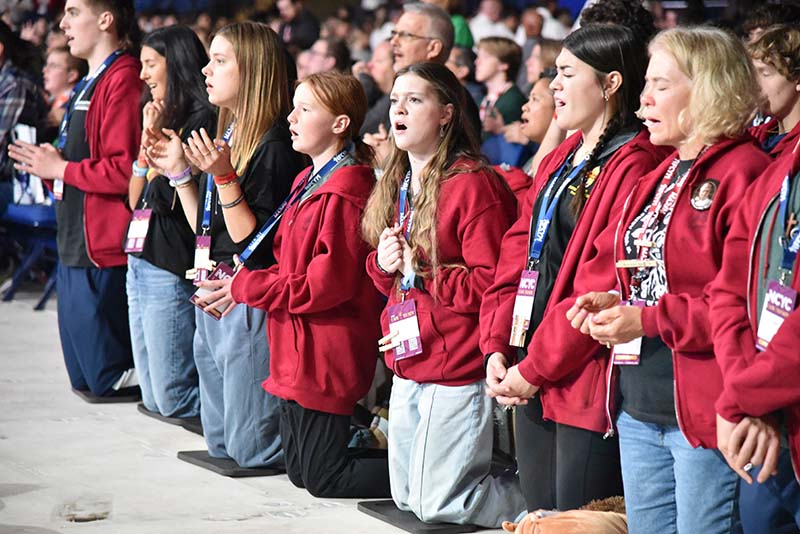How Trump’s envoys got Gaza deal over the finish line
Ceasefire talks between Israel and Hamas were stalling this week until U.S. emissaries Steve Witkoff and Jared Kushner swept in to dictate key compromises, according to three people familiar with the diplomatic effort and an administration official.
In the first few days, “it was going very slow,” said one of the people familiar with the talks, which started Monday. “There was no willingness to budge on key issues.”
The issues included where Israeli troops would withdraw to, the mechanics of the hostage release and prisoner exchange, how aid would flow into the Gaza Strip and which Palestinian prisoners would come out of Israel, said the person, who like others in this story was granted anonymity to discuss sensitive negotiations.
Then on Wednesday, Witkoff and Kushner arrived, along with Qatari Prime Minister Mohammed Abdulrahman Al Thani. They presented a series of terms and pressed both sides to accept them quickly.
The breakneck speed with which the deal came together after Witkoff and Kushner became directly involved speaks to the intense pressure all sides were feeling to get a deal done after weeks of President Donald Trump saying it was “very close.”
It illustrates the extent to which the Trump administration’s posture on the conflict has shifted to strong-arming both sides, starting from Trump’s meeting with Israeli Prime Minister Benjamin Netanyahu last week in which he prompted him to apologize to Qatar for a strike against Hamas negotiators in Doha.
The U.S. administration’s terms included a demand that Israel begin pulling its troops back before any hostages are released, according to another one of the people familiar with the talks. The person said it was just one of a number of trade-offs that helped seal the deal.
Discussions continued into the evening, but the deal started to come together. It was about 2:30 a.m. Thursday in Egypt when Trump had a final consultation with his negotiators before firing off the Truth Social post announcing an end to the conflict, senior U.S. officials told reporters in a briefing.
While Witkoff and Kushner helped solidify the agreement, others were important players in the negotiations as well — including officials from Egypt and from Turkey, whose deep influence with Hamas helped to move things over the line. And it’s possible that many of those involved were waiting for the U.S. representatives to arrive to make definitive calls.
But the rapid pace of the Wednesday evening breakthrough surprised many of the officials involved in the negotiations, who thought the discussions could last into the weekend, according to the two people familiar with the talks.
“We were expecting to need five more days,” the first person familiar with the talks said.
The terms that Witkoff and Kushner set out will, if all goes according to plan, lead to the release of the remaining Israeli hostages and hundreds of Palestinian prisoners, the initial Israeli troop withdrawal and increased aid deliveries to the Gaza Strip, easing two years of war that has engulfed the region and led to thousands of deaths.
But much could fall apart in the next few days, and the Trump administration is pressing on a number of fronts to make sure it doesn’t.
From the talks in Sharm El Sheikh, Kushner and Witkoff flew to Cairo to brief Egyptian President Abdel Fattah El-Sisi on the plan and to stress that they would need his help implementing it. From there, they went on to Jerusalem to kick off the fragile beginning of the first phase.
Witkoff and Kushner met with Israel’s cabinet for about an hour late Thursday, explaining to them the merits of the deal and why the administration backed it, the U.S. officials told reporters in the briefing. Israel’s cabinet approved the hostage release deal a few hours later.
The White House declined to comment on the negotiations beyond the information offered in the briefing.
The Israeli troop withdrawal is expected to follow within a day of the cabinet’s approval, followed by Hamas releasing the remaining Israeli hostages, including 20 believed to be alive and the bodies of 28 who died in captivity. Israel agreed to release hundreds of Palestinian prisoners and increased aid will begin to flow to the Gaza Strip.
Trump is expected to visit Israel on Sunday, where he will address the Knesset, meet with hostage families and observe the release of some of those still held in Gaza, according to an Israeli and another U.S. official, though the plans are in flux.
Witkoff and Kushner will remain in Israel over the weekend to make sure the first phase of the deal is implemented.
“There’s still just a lot of ways that this can go wrong, so we’re staying on top of the details to make sure everyone fulfills their obligations and that any misunderstandings are quickly discussed and adjudicated,” a senior U.S. official told reporters in the briefing.
Should it be fully completed, the release of all of the remaining hostages is a significant turning point in two years of war that will create much more space for the U.S., its Arab partners and Israel to maneuver.
But it is only the first phase of the 20-point plan and many questions remain unanswered, such as whether Hamas will disarm or who will run Gaza after the war ends.
“The difficult days are the ones that follow Monday,” said Robert Greenway, senior director for the Middle East in the first Trump administration, now at the Heritage Foundation. Greenway, who worked with Kushner on the Abraham Accords — which normalized relations between Israel and several Arab states, was referring to the day Trump has said Hamas will begin to release hostages.
Two hundred U.S. troops have begun arriving in Israel to stand up a joint task force to help monitor the ceasefire and help with logistics and coordination, a U.S. defense official said, adding that they will all be in place over the weekend.
Egyptian, Qatari, Turkish and Emirati service members are expected to join the effort, the U.S. officials told reporters. The senior U.S. official said in the briefing that the U.S. troops would not be entering Gaza and that negotiations would take place over the weekend to decide where they will be located.
In the negotiations, Arab states pledged to Israel to stand behind the decommissioning of Hamas weapons, while the U.S. guaranteed to Hamas that were the militant group to release all of the hostages, Israel will not resume the war.
After the hostage release and prisoner swap, the U.S. plans to start negotiating the more challenging issues like disarming Hamas, creating a technocratic government and fully redeploying the Israeli army.
The CENTCOM task force plans to liaise with the Israel Defense Forces and help begin the process to stand up an international security force including Arab and other forces that ultimately is aimed at replacing the IDF in parts of Gaza, the officials told reporters.
While the U.S. says it has commitments from Muslim and Arab countries to join such a force, it will be a significant challenge to actually field it.
“While Trump is here on the ground, there will be intensified hope to see the living hostages released,” an Israeli official said, granted anonymity to discuss plans still in flux, adding that the timing of Trump’s trip — coinciding with the two year anniversary of the Oct. 7 attacks in the Hebrew calendar — is “extremely important for the Israeli psyche.”
Paul McLeary contributed to this report.




















:quality(85):upscale()/2023/09/18/918/n/1922398/a1136b676508baddc752f5.20098216_.jpg)
:quality(85):upscale()/2025/10/09/670/n/1922283/00b944c868e7cf4f7b79b3.95741067_.jpg)
:quality(85):upscale()/2025/10/15/765/n/1922398/29c37a6e68efd84bb02f35.49541188_.jpg)
:quality(85):upscale()/2025/09/09/891/n/1922283/7222624268c08ccba1c9a3.01436482_.png)
















